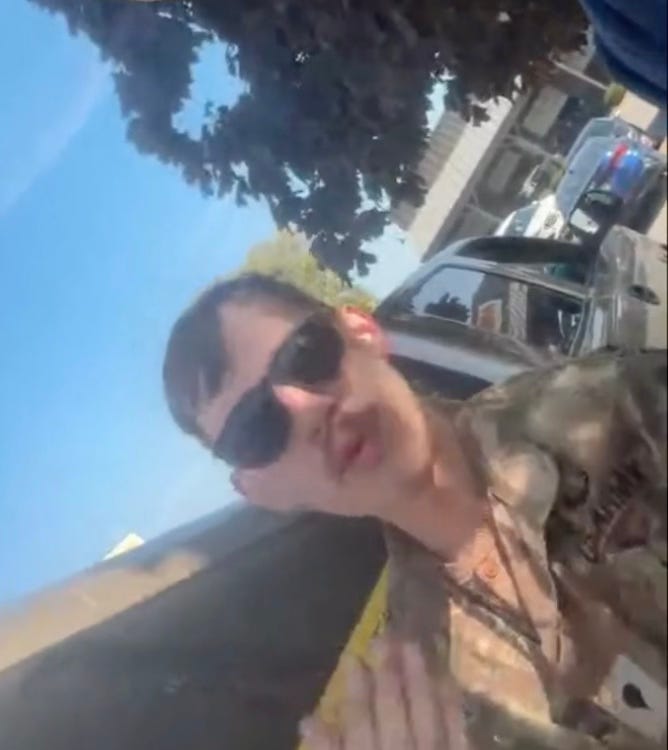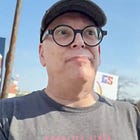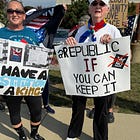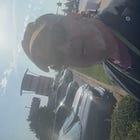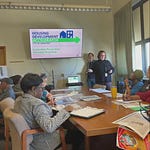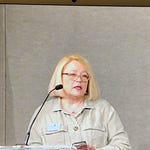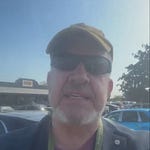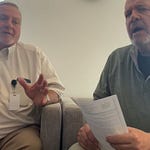SANDUSKY — More than 5 million people joined No Kings protests across over 2,100 events in cities and small towns alike on Saturday, opposition to what organizers describe as an era of authoritarian overreach under Donald Trump.
Among the wave of activism was a demonstration in Sandusky, where individuals came not only to speak out against Trump — but to build signs, connect with neighbors, and claim their place in the resistance.
Scene at the protest: The power’s in the little bit”
The protest drew a mix of longtime activists and newcomers, some holding American flags, others carrying hand-painted signs. Among them was Sawyer, a 24-year-old from Vermilion, who showed up with his pickup with the tailgate open like a table, with markers.
The mission, according to Sawyer is “to make sure everyone who wanted a sign had one.”
Up against the beige truck, hand-painted signs leaned against folding tables and backpack coolers. Sawyer was handing out poster board and Sharpies to anyone who needed a sign.
He’s set up a makeshift sign-making station at other events, too, the kind of grassroots operation that gives a protest its own heartbeat — simple, handmade, and full of purpose.
“A lot of people show up without signs,” Sawyer said. “If we can give them something to hold, it makes them feel more a part of the community. There’s power in that — even a little bit.”
The protest had drawn a cross-section of ages and attitudes. There were retirees in folding chairs, students with earbuds, and veterans of past marches swapping stories under a brisk October wind. Sawyer’s small table — cardboard boxes for stencils, a few brushes, leftover signs from earlier protests — had become a gathering spot.
“We reuse old signs, too,” he said. “Nothing goes to waste. The message might change, but the purpose doesn’t.”
Asked what brought him out, Sawyer paused — not for effect, but as if measuring how far he could go before sounding too heavy for a Saturday crowd.
“That’s a loaded question,” he said. “Really, it’s the advancement of tyranny in our country. It’s a problem. And this is a time when we need community-building more than ever. If I can help with that, even in a small way, I will.”
He looked around the square — where chants were starting up again near the sidewalk — and smiled.
“The more community we can build,” he said, “the better we can fight.”
He picked up a marker, started sketching a slogan on a fresh piece of cardboard, and handed another to a teenager who had just walked up.
“Here,” Sawyer said. “Make it yours.”


